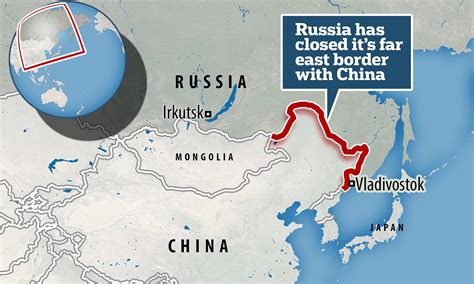
China will invade Siberia, not Taiwan
by John Lonergan, opinion contributor
China’s threats against Taiwan get a lot of attention. But a far more audacious plan is unfolding in Beijing. Emerging evidence — drawn from internal Chinese deliberations and a leaked Russian intelligence document — suggests that China’s ambitions are pivoting north, to Siberia.
This shift — driven by Chinese resource hunger, geopolitical opportunism and Russia’s weakening grip — could reshape the global order in ways the West has yet to fully grasp. Moreover, the staggering costs of invading Taiwan, and Siberia’s role in fueling China’s economic growth, make the northern pivot increasingly likely by 2027.
China’s fixation on Taiwan, fueled by national pride and Xi Jinping’s vision, remains a rhetorical cornerstone. However, a full-scale amphibious invasion would be a logistical and economic nightmare.
Hitler was stopped by the 22-mile gap ocean between France and the U.K. The Taiwan Strait is five-times wider, and the 100-mile-wide chokepoint is heavily defended by Taiwan’s modernized military and backed by explicit and implicit U.S. and allied support.
A comprehensive 2023 war game conducted by the Center for Strategic and International Studies concluded that a Chinese invasion would likely fail and come at a staggering cost to all parties. The study projects that in a three-week conflict, China would suffer devastating losses, including an estimated 10,000 troops killed and the loss of 155 combat aircraft and 138 major ships.
The economic fallout would be catastrophic. A 2024 analysis by Bloomberg Economics estimated that a war over Taiwan would cost the world approximately $10 trillion, equivalent to 10 percent of global GDP. Taiwan’s dominance in semiconductor production means any disruption would cripple global supply chains, including China’s own tech sector. These prohibitive costs, coupled with the high risk of a broader, protracted conflict with America and its allies, make a near-term invasion of Taiwan increasingly improbable.
In contrast, Siberia offers a tantalizing prize with fewer immediate risks. Its vast reserves of oil, gas, gold, diamonds, rare earth minerals and fresh water are critical to sustaining China’s resource-strapped economy.
China’s arid northern provinces face chronic water scarcity. The North China Plain, an agricultural and industrial heartland, supports 20 percent of China’s population with only 5 percent of its freshwater. Siberia’s Lake Baikal alone holds 20 percent of the world’s unfrozen freshwater, a resource that could be diverted to transform China’s north.
This strategic calculus is underpinned by a growing sentiment within some Chinese circles that Russia is a power in decline, unable to effectively manage or defend its resource wealth. Siberia’s resources could fuel China’s projected GDP growth targets, addressing soaring energy demands — China is the world’s largest crude oil importer — and securing critical rare earths essential for its dominance in green technology and advanced military industries. In 2023, China’s rare earth mining quota surged to 240,000 tons, yet its demand continues to outstrip domestic supply.
Russia’s weakening grip enhances Siberia’s allure. A leaked document, purportedly from Russia’s Federal Security Service, has detailed Moscow’s deep-seated fears of Chinese demographic and economic encroachment in the Far East.
Russia’s military, severely depleted by the protracted war in Ukraine, has reportedly diverted a significant portion of its eastern forces westward. This has left the vast, 6-million-square-mile territory of Siberia — home to 30 million people — dangerously under-defended.
The report, as described by The New York Times, notes an alleged increased in Chinese intelligence activity, including efforts to recruit Russian scientists, target military technology and subtly assert historical territorial claims, such as the use of the name “Haishenwai” for Vladivostok on official maps. These actions tap into historical grievances over the “Unequal Treaties” of the 19th century, through which Russia annexed vast territory from China during the Qing Dynasty.
Russia’s eastern defenses are in a precarious state. A recent analysis by the Institute for the Study of War underscores the unsustainability of Russia’s equipment and personnel losses. The report explains that the high rate of attrition and the finite nature of Soviet-era stockpiles will likely lead to a point of diminishing availability of crucial military hardware by late 2025 or 2026. This systemic weakness affects the entire Russian military, including forces stationed in Siberia, which have been drawn upon to support operations in Ukraine. Reports from the region describe garrisons stripped of experienced personnel, reliant on outdated equipment and undertrained conscripts.
In stark contrast, China’s People’s Liberation Army is a modern and technologically advanced force. It boasts hypersonic missiles, fifth-generation fighter jets and sophisticated cyber warfare capabilities that could quickly overwhelm Russia’s depleted eastern defenses. Furthermore, Russia’s economy, battered by Western sanctions and increasingly dependent on Chinese energy, lacks the capacity to meaningfully reinforce its eastern flank.
With Moscow’s political, military and economic focus almost entirely consumed by Ukraine, it remains dangerously exposed to the strategic ambitions of its powerful neighbor.
The Chinese Communist Party has invested massively in military modernization with the stated goal of being ready for a major conflict by 2027. If Beijing concludes that a direct assault on Taiwan is too risky, the formidable army it has built will likely not sit idle. It will be a tool available to advance long-term Chinese strategic objectives elsewhere — and Siberia presents the most obvious opportunity.
Taiwan remains a long-term Chinese goal, but its conquest risks global isolation and economic collapse. Siberia, in contrast, is a stealthier, more pragmatic target. The West, distracted by the conflict in Ukraine and the persistent threat to Taiwan, is unlikely to intervene decisively in a region it has long deemed peripheral to its core interests. Russia, economically tethered to Beijing and militarily weakened, might be forced to limit its retaliation to avoid losing its most crucial trade partner.
China could frame an incursion as a “limited special military operation” to secure vital resources and protect its economic interests, ironically mirroring Russia’s own playbook in Ukraine. The dire warnings from within the Russian intelligence, reportedly dismissed by a Kremlin desperate to project an image of strength and unwavering partnership with China, suggest Moscow is dangerously unprepared for Beijing’s audacity.
John Lonergan is a Harvard MBA with substantial international business experience and the author of two books about Russian biowarfare activities, “Containment” and “Outbreak.” The third in the series, “Contagion,” will be released this summer and describes a possible invasion of Siberia by Chinese forces.

I have been saying for years that the two nations cannot coexist for long before one or the other decides that it wants it all. Russia is exposed, they are stretched to thin and have been exposed as not the super power they claimed. The only deterrent is its nukes. With China a growing nuclear power, just how many times can you nuke a country? Mutually assured destruction.